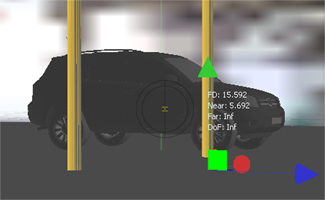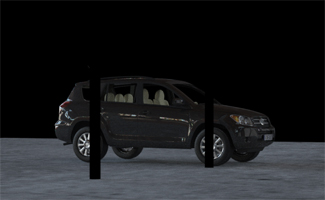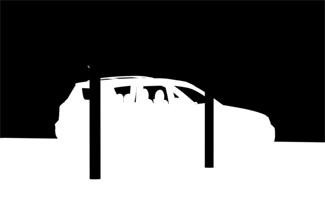Global Material Properties
The Global Properties of a material in the Material Editor
Above all the layers in the material tree, you can see the Global Material Properties panel, that contains several parameters that affect globally the material as a whole.
Type
Choose the type of material, from the different Material Assistants or a Custom type, or a Referenced MXM (Maxwell material file).
Override map
This setting lets you override all the projection properties of any other texture used in the material. This can be very useful if you want to for example make sure that all the textures are using the same repeat setting for the tiling. To use it, set the projection parameters you want and close the window. Then open the Texture Picker of any texture used in the material and in the Projection properties make sure that "Use Override map" is checked. This texture will then use the projection properties specified in the Override Map texture picker.
Global Bump/Normal map
In addition to the Bump/Normal maps you can have in the different BSDFs off your material, you can specify an additional global Bump/Normal map which will affect the whole material.
Dispersion
This option allows you to enable/disable the dispersion calculations on your material. As the light dispersion calculations on transmissive materials are relatively time consuming, this option is disabled by default. For more information about dispersion and the Abbe parameters, see the Transmissive Properties section.
Shadow
Enable/disable the shadow catcher properties for this material. Whenever you want a shadow pass including the shadows cast over certain surface, you have to enable this option on that surfaces material, and enable the Shadow Channel option on the Render Options as well. See below a further explanation and example.
Matte
Enabling his option allows you to turn the material into a matte material, which “cuts” through the entire image and reveals the background (IBL or Physical Sky if enabled; black if no environment lighting is used). Useful for compositing purposes. See below a further explanation and example.
Material Id
You can specify a desired custom color to be used to identify this material in the Material Id channel. If you don't specify any custom color, Maxwell picks a different random color for each material on your scene.
Shadow catcher
This option can be turned on for a material and will make all objects with that material applied behave as shadow catchers. If you turn on shadow channel in the Render Options panel, all materials that have this option turned on will only render shadows. All materials with this option turned off will render white. This allows you to render a shadow-only pass for compositing purposes.
Keep in mind that the shadow pass progressively increases in quality, just like the main render. If you have both the main render channel and the shadow pass channel checked in render options, two separate images will be rendered, one being the main render, the other the shadow pass.
You can see a further explanation in the Shadow channel page.
The Shadow feature enabled on the ground material alone (left) and on all objects (right)
Matte Material
This option turns the material into a matte material which “cuts” through the entire image and reveals the background (IBL or Physical Sky if enabled; black if no environment lighting is used).
This is useful for compositing purposes. For example, if you have columns in front of an object and the columns will be rendered in another pass, you can turn on matte material for the columns, and the character will be rendered with the columns “cut” from the character. The columns will still contribute to the lighting, even with Matte material turned on.
The columns have the Matte feature enabled to produce a "cut" that reveals the columns in the background picture.
The "cut" also appears in the Alpha channel.





